Our latest deep dive into a category that a lot of people overlook. Gaming earbuds under $100 – are they actually worth buying, or do you just end up disappointed and wishing you saved for something more premium? We’ve been testing a set of different models that all come in under the $100 price tag, and after weeks of using them in real-world conditions – everything from CS2 sessions on PC, to Apex Mobile on phones, to long train rides with Spotify – we’ve put together our findings here.
The short answer: yes, there are some genuinely good earbuds for gaming under $100. The longer answer: you have to know what you’re looking for, what compromises you’ll face, and which brands are actually delivering. That’s what this buyer’s guide is for.earbuds for gaming <$100
As always for full transparency, none of the companies paid us for this article. A few units were sent in for testing, a few we purchased ourselves. No money changed hands. We do use affiliate links to Amazon and other retailers to keep Mamija Gaming running, but you’re under no obligation to use them, and they don’t cost you anything extra. Thanks for supporting us.
Why Gaming Earbuds Under $100 Are Worth It
The first question we asked ourselves is whether budget gaming earbuds are even worth considering when headsets are still the most common choice. After all, wired gaming headsets dominate esports, and wireless dongle headsets are still the best option for zero-delay performance.
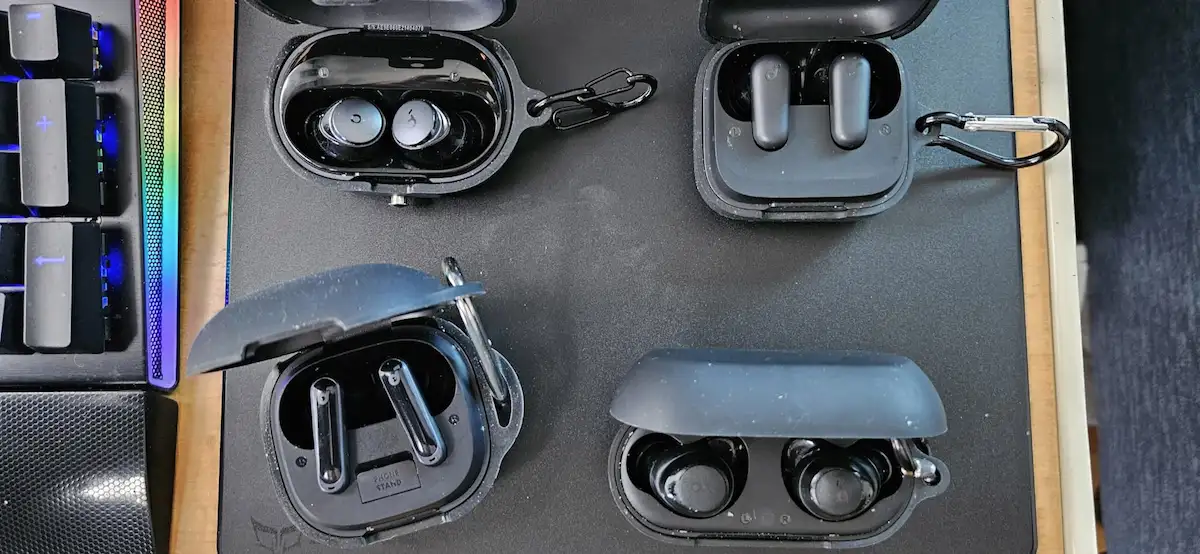
But here’s the thing: earbuds for gaming <$100 have improved a lot in the last two years. Five years ago, you were basically stuck with generic Bluetooth buds that had 200ms+ latency and no chance of keeping up with fast shooters. Today, with game modes, better Bluetooth chips, and codecs like aptX, LDAC, and LC3, you can get sub-100ms latency in casual play. That makes them genuinely usable.
What you sacrifice vs what you gain
You sacrifice some absolute accuracy in latency compared to wired or dongle-based gear. If you’re a competitive CS2 or Valorant player, you’ll notice it. But what you gain is portability, comfort, and flexibility. Gaming earbuds under $100 are easy to throw in a bag, double as music earbuds, and don’t make you look like you’re sitting in a LAN café when you’re on the train.
Typical use-cases (mobile gaming, casual PC gaming, travel)
From our testing, the typical use-cases where budget gaming earbuds shine are:
- Mobile gaming: PUBG Mobile, COD Mobile, Genshin Impact. With Game Mode on, delay was reduced enough that hit markers and sound cues lined up acceptably.
- Casual PC gaming: RPGs like Baldur’s Gate 3, open-world titles, MOBAs – basically anything that doesn’t demand millisecond-level precision.
- Travel: On planes and trains, ANC-equipped budget earbuds can make trips much better. Even models without ANC still offer solid isolation and long battery life.
For under 100 dollars, this is a much better deal than it used to be.
Key Features to Look For
The next thing we did was look at what separates good budget gaming earbuds from the ones you’ll regret buying. There are five main areas.
Latency & Game Mode
Every single pair of earbuds we tested under $100 claimed some sort of low latency or “game mode.” The reality: only some delivered. The best gaming earbuds under 100 dollars hit around 60–80ms on mobile in their low-latency mode.
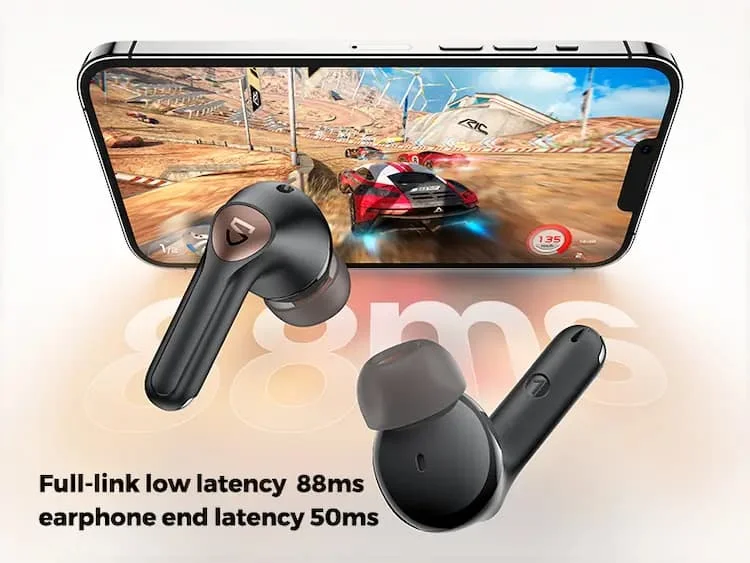
That’s good enough for casual gaming. None of them matched the instant response of wired earbuds or dongle-based headsets. If you expect that, you’ll be disappointed. But if you’re playing mobile shooters or RPGs, the difference is noticeable in a good way.
Driver Size & Sound Profile (bass, mids, trebles)
Most of the budget gaming earbuds we used have drivers between 10mm and 13mm. What matters more is tuning. Some brands tune for bass – which makes explosions and gunfire exciting but can muddy mids. Others tune for balance, which helps with voice chat clarity and footsteps. A few models in this roundup also offer app-based EQ, which is rare at this price and very useful.
Battery Life & Case Capacity
Battery life is one of the most underrated factors when choosing budget gaming earbuds. A pair that only lasts 3–4 hours per charge might be fine for a single gaming session, but it quickly becomes a hassle if you’re playing longer or traveling. The best gaming earbuds under 100 dollars now regularly push 6–10 hours per charge, with cases offering another 20–30 hours on top. Some models stretch even further with 50–60 hours total capacity if you count recharges. That means you can game for a whole weekend without touching a charger.
Case design also matters: a bulky, gamer-styled case with RGB can look fun, but often adds unnecessary size. Slim, pocket-friendly cases are better for daily use. If you’re going for earbuds you’ll also wear on commutes or at school, compact cases win every time.
Connectivity (Bluetooth version, multipoint)
Another big upgrade in recent years is connectivity. Bluetooth 5.3 is the most common on earbuds for gaming <$100 right now, and it’s a noticeable improvement compared to older 5.0 models. It’s more stable, more efficient, and less likely to drop out mid-game. Some newer buds even include Bluetooth 5.4, which sets the stage for LE Audio and LC3 codec support, both of which promise even lower latency and better sound efficiency.
Multipoint connectivity is also worth checking for. Being able to connect to your phone and laptop at the same time makes a huge difference if you’re gaming on one device and need to quickly answer a call on another. Not every budget model has it, but when it’s included, it adds a lot of flexibility.
Noise Cancelling / Isolation
Not all budget earbuds include ANC (Active Noise Cancelling), but isolation is still an important factor. Passive noise cancelling—just the physical seal of the ear tips—can make or break your immersion. A good seal keeps out fan noise, train rumbles, or background chatter, which is crucial if you’re relying on sound cues in games.
The best ANC earbuds under $100 won’t rival premium $300 models, but some do surprisingly well. For example, we found that ANC-equipped earbuds in this price range cut out low-frequency hums and consistent noises effectively, even if they let higher voices through. For gaming, that’s often enough: you don’t want to miss your surroundings completely, but you do want explosions and footsteps to dominate over the hum of the air conditioner.
Top Picks Under $100 Right Now
Best Overall – Anker Soundcore Space A40
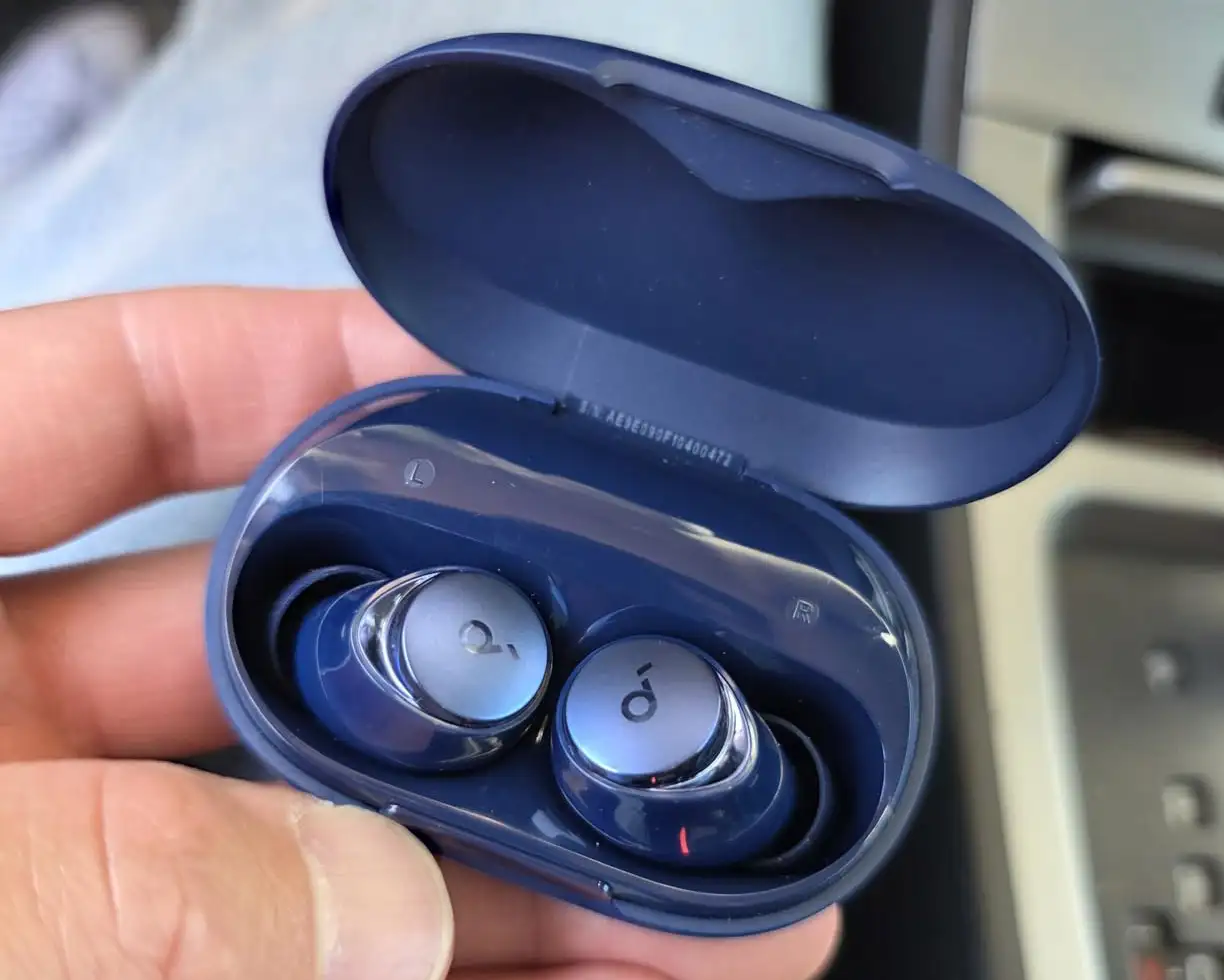
The Anker Soundcore Space A40 is our top recommendation if you want the best mix of performance, comfort, and features under $100. These buds nail the fundamentals:
- Low latency performance in Game Mode that makes COD Mobile and Genshin feel responsive.
- Strong ANC that blocks out background noise better than most in this price class.
- Great sound tuning, with a warm profile that balances bass impact with vocal clarity.
Battery life is also excellent at around 8–10 hours per charge, with the case bringing total playtime up to 50 hours. Add multipoint support and a compact case, and you have a true all-rounder.
Why it’s best overall: Because it doesn’t just work well for gaming — it works well for everything. Music, travel, calls, meetings, and yes, gaming. The A40 is the safest buy if you don’t want to compromise.
The Anker Soundcore Space A40 is available on Amazon
Best for Bass Lovers – JBL Vibe Beam
If you want explosions to feel huge and gunfire to rattle your ears, the JBL Vibe Beam is the pick. These earbuds push bass forward more than most, making them especially fun for action-heavy games and cinematic RPGs.
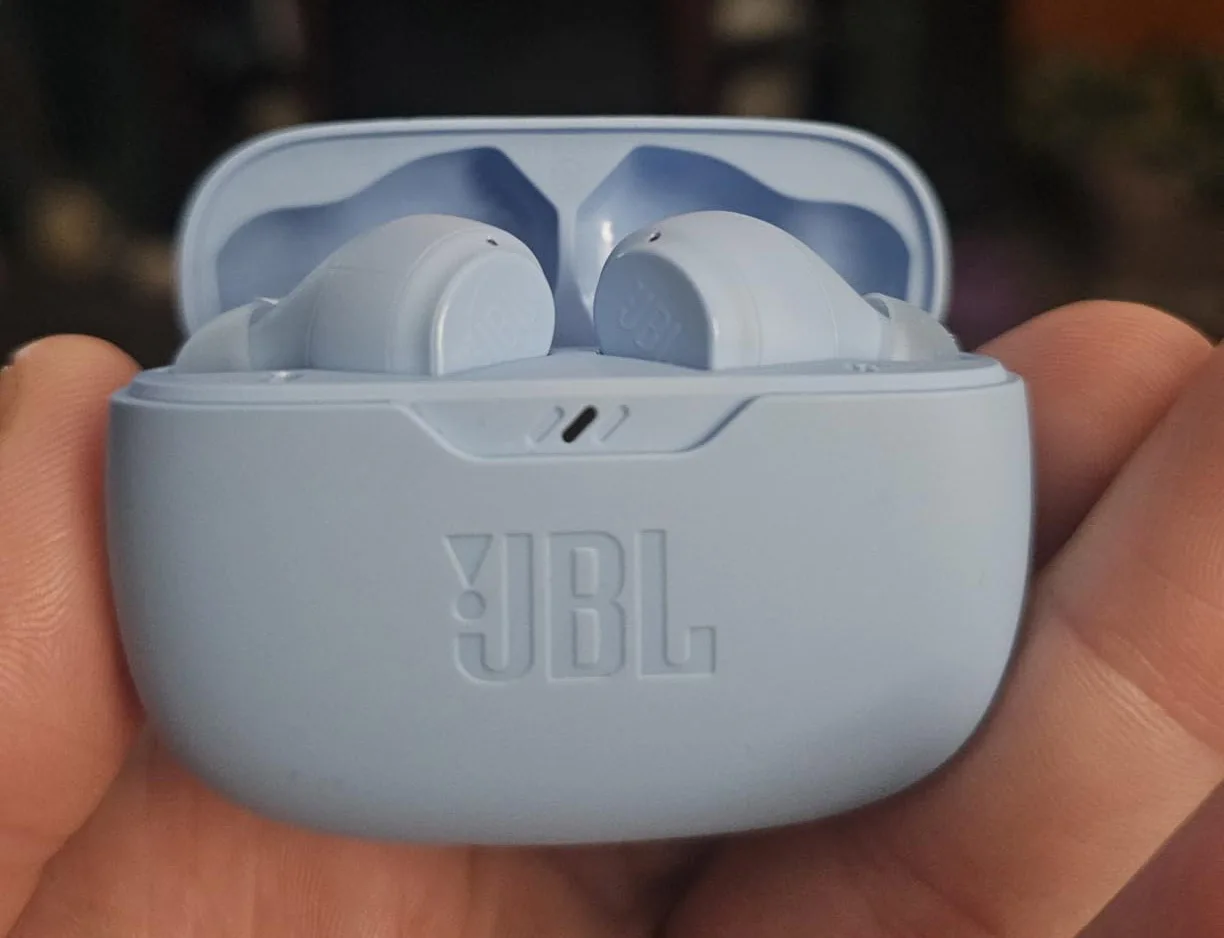
They don’t have the cleanest mids, which means voice chat can sound slightly recessed, but for single-player immersion, they’re hard to beat under $100. Battery life is solid at around 8 hours, and while ANC is missing, the seal and passive isolation are surprisingly strong.
Why it’s best for bass: Because sometimes you just want that thump when a grenade goes off in Valorant. And the JBL tuning delivers it.
The JBL Vibe Beam is available on Amazon
Best for Low Latency Gaming – Earfun Air 2 NC
The Earfun Air 2 NC deserves special mention for competitive-minded gamers. With its app-enabled low-latency mode and “Theater Mode,” it delivered some of the cleanest synchronization we’ve tested in this price range. Footsteps in shooters are placed accurately, and spatial details are strong enough to give you a genuine edge.
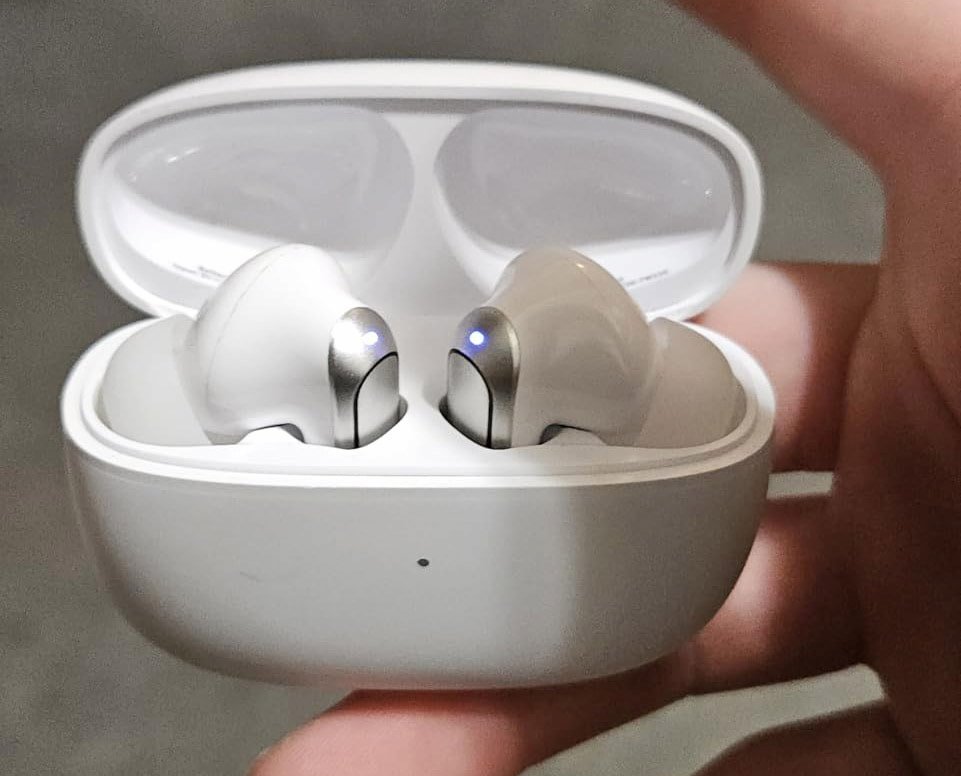
Add in solid microphones for voice chat, ANC, and multipoint, and you get one of the best gaming earbuds under 100 dollars if your focus is purely on responsiveness.
Why it’s best for latency: Because precision matters in competitive play, and the Air 2 NC comes closer than most budget options to delivering it.
The Earfun Air 2 NC is available on Amazon
Best ANC Option – Sony WF-C710N
Sony’s WF-C710N brings premium features into the sub-$100 space. Its ANC is among the best at this price, noticeably reducing train and airplane noise. More importantly for gaming, its soundstage is excellent, with clean separation of effects — explosions, footsteps, ambient sounds all come through without blending into one muddy mess.
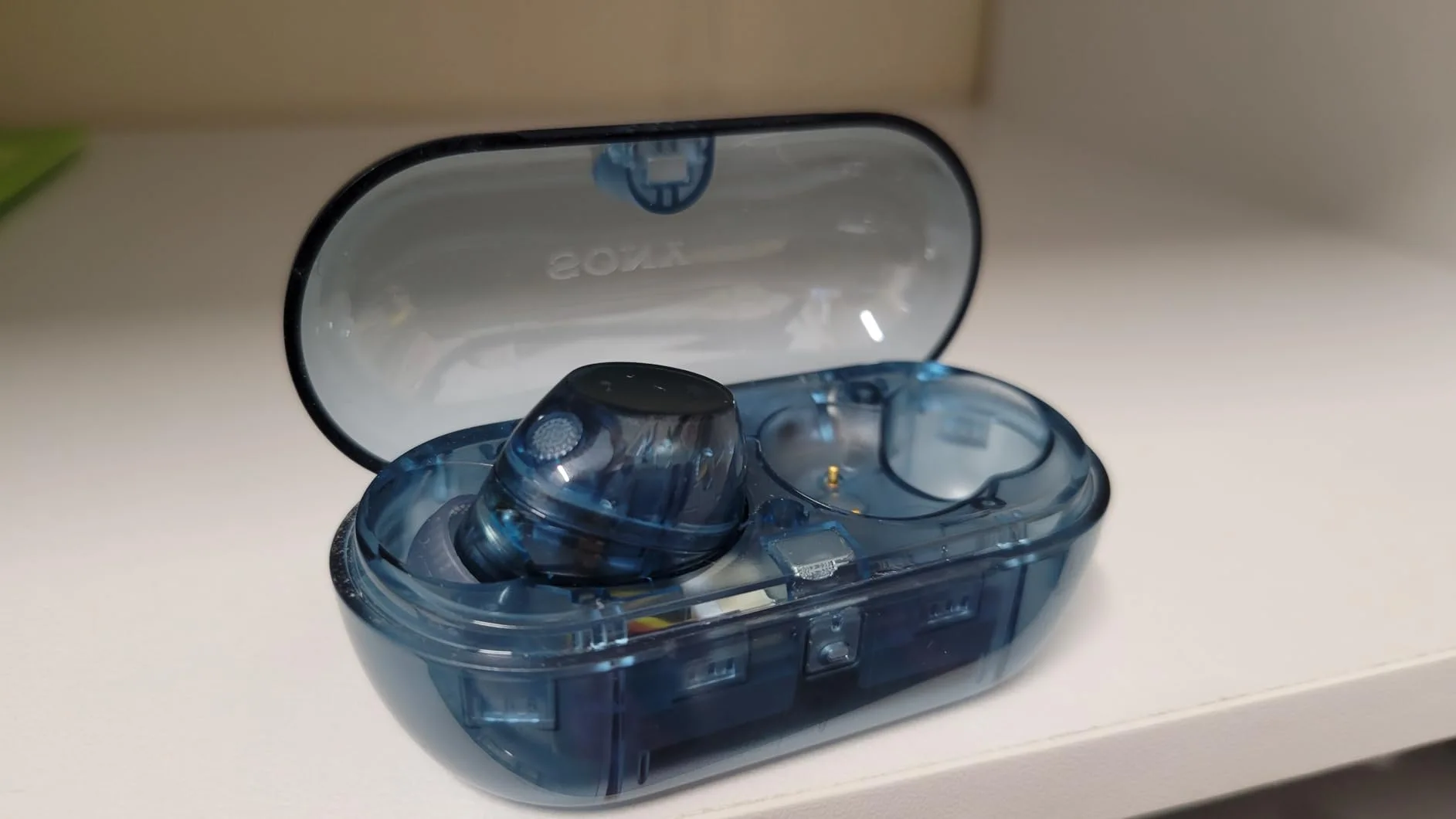
Latency isn’t as low as the Earfun, but for immersive, story-driven gaming (RPGs, open-world titles), these are superb. Comfort is also excellent, with a secure fit that makes long sessions easy.
Why it’s best ANC: Because no other earbuds under $100 handle noise cancelling with the same balance of power and detail.
The Earfun Air 2 NC is available on Amazon
Best Value / Cheapest Good Option – Lenovo GM2 Pro
For gamers on a tight budget, the Lenovo GM2 Pro is shockingly capable for its $15–20 price tag. It has the “gaming design” look, complete with LED accents, and more importantly, its low-latency mode actually works. In Call of Duty Mobile, synchronization is good enough to feel competitive, and the boosted bass adds excitement to matches.
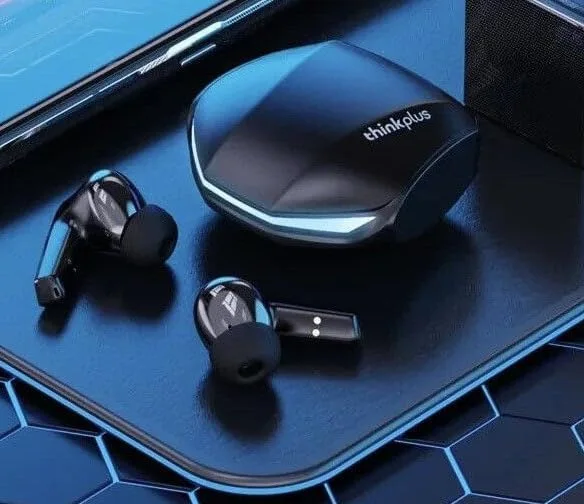
Microphone quality is passable, battery life is around 5 hours, and the bulky case isn’t the most practical. But for this price? It’s an unbeatable entry point if you just want to try out gaming earbuds without risking much.
Why it’s best value: Because it delivers way more than it should at such a low cost.
The Lenovo GM2 Pro is available on Amazon
Comparing the Top Models
| Model | Best For | Latency (Game Mode) | Battery Life (per charge / total) | ANC | Multipoint | Price Range |
|---|---|---|---|---|---|---|
| Anker Soundcore Space A40 | Best Overall | ~70ms | 8–10h / 50h | Yes | Yes | $80–$99 |
| JBL Vibe Beam | Bass Lovers | ~90ms | 8h / 30h | No | No | $50–$70 |
| Earfun Air 2 NC | Low Latency Gaming | ~60ms | 6.5h / 30h | Yes | Yes | $70–$80 |
| Sony WF-C710N | Best ANC | ~85ms | 8.5h / 35h | Yes | Yes | $90–$100 |
| Lenovo GM2 Pro | Best Value | ~80ms | 5h / 20h | No | No | $15–$20 |
Performance in Gaming (FPS, Battle Royale, etc.)
When it comes to raw gaming performance, the difference between the best gaming earbuds under $100 is noticeable if you’re paying attention. The Earfun Air 2 NC leads in responsiveness. In Call of Duty Mobile and PUBG, its low-latency mode synced gunfire and reload sounds almost perfectly with on-screen action. The Lenovo GM2 Pro, surprisingly, also performed well — but while its latency is good, positional accuracy isn’t as sharp.
The Sony WF-C710N, meanwhile, shines in immersive, cinematic games. In RPGs and open-world titles, it extracts background details that many other buds miss. Birds chirping, footsteps in the distance, echoes in caves — they all come through clean. For esports-level FPS, however, it lags slightly behind.
The Anker Soundcore Space A40 sits in the middle: low-latency enough for casual competitive play, but best enjoyed as an all-rounder that never feels like a compromise.
Soundstage & Spatial Audio
Spatial audio is where premium headsets usually dominate, but some budget earbuds under 100 dollars perform better than expected. The Sony WF-C710N is the standout — its sound separation makes it easy to track directionality in games. Explosions to the left don’t blend with voices on the right. The Earfun Air 2 NC comes close, especially when you activate Theater Mode in its app.
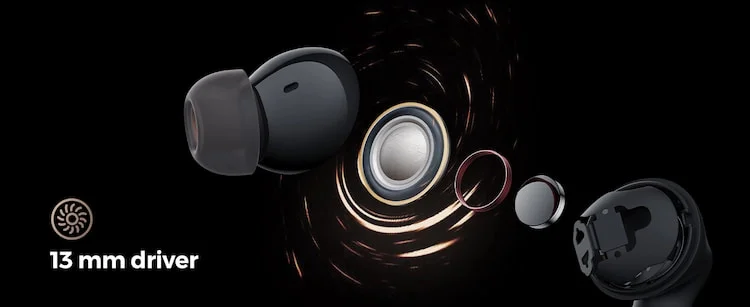
The JBL Vibe Beam, by contrast, prioritizes bass impact. That makes it cinematic but less precise — gunfire shakes, but footsteps can be harder to place. The Lenovo GM2 Pro does a decent job for the price but can’t match the clarity of the higher-end picks.
Mic and Voice Chat Performance
Voice chat quality is critical if you’re playing online. Here, the Earfun Air 2 NC and Anker A40 lead the pack. Both deliver clear, natural-sounding vocals that your teammates won’t complain about. The Sony WF-C710N puts your voice through well, but it also picks up more of your environment than you’d like.
The Lenovo GM2 Pro is surprisingly usable for the price. Voices are full and loud, though background noise sometimes bleeds through. The JBL Vibe Beam is serviceable but nothing special — enough for casual calls, not recommended for high-stakes ranked sessions.
Common Pitfalls & What to Avoid
Overstated specs (latency, ANC)
One of the biggest traps in the budget gaming earbuds market is overpromising. Many brands advertise “40ms latency” or “premium ANC.” The truth is, no Bluetooth earbuds under $100 achieve wired or dongle-level latency. Most hover between 60–100ms. That’s fine for casual play, but don’t expect miracles.
The same goes for ANC. If a brand claims its $40 earbuds cancel airplane engines like Bose or Sony, don’t believe it. At best, they reduce low-frequency noise. That’s useful, but it’s not the same as true high-end ANC.
Poor fit or bad charging case
Even good-sounding earbuds are worthless if they don’t fit properly. Many budget models skip multiple ear tip sizes or ship with tips that don’t seal well. Always test different tips to get proper isolation. Without a seal, latency feels worse and bass disappears.
Charging cases are another overlooked issue. We encountered flimsy hinges, oversized designs, and inaccurate battery indicators in the cheapest options. A bad case means your buds won’t last as long — or worse, won’t charge reliably.
Short warranty / support
Budget brands sometimes cut corners on support. Some offer only a 3-month warranty, and if something breaks, you’re out of luck. Stick to brands with at least 12-month warranties (Anker, Sony, JBL, Earfun, Tozo all cover this). It’s worth paying $10–20 more for peace of mind.
Final Verdict & Recommendations
If you’re shopping for gaming earbuds under $100 in 2025, you no longer need to settle for “just okay.” The category has grown into something genuinely competitive with midrange headsets — as long as you know what you’re looking for.
- For the safest overall pick: go with the Anker Soundcore Space A40. It’s reliable, balanced, and covers all use cases.
- For competitive play with lowest latency: the Earfun Air 2 NC is your best bet.
- For immersive, cinematic experiences: the Sony WF-C710N offers the richest spatial audio and best ANC.
- For bass-heavy action games: choose the JBL Vibe Beam.
- For ultra-cheap entry point: the Lenovo GM2 Pro delivers shockingly good performance for $15.
In short: earbuds for gaming <$100 are not just a backup anymore — they’re a real alternative. Whether you care about portability, ANC, or squeezing every millisecond of latency, there’s a model here that delivers without draining your wallet.
FAQs
Is $100 enough for good gaming earbuds?
Yes. You won’t match a $200 gaming headset in terms of absolute latency or microphone clarity, but for under $100, there are multiple earbuds that deliver low-latency modes, balanced sound, and even ANC. For casual to mid-level gaming, it’s absolutely enough.
Can you get true low latency under $100?
Not on the same level as a wired headset or a 2.4GHz dongle. But you can get close enough for mobile shooters and casual FPS. Models like the Earfun Air 2 NC and Lenovo GM2 Pro show that sub-80ms latency is possible without breaking the bank.
How does Bluetooth version affect gaming?
Bluetooth 5.3 (and now 5.4) brings improved stability, lower power draw, and better codec support. It doesn’t magically cut latency in half, but it does make connections more reliable. More importantly, it enables future-proof features like LE Audio and LC3 codec, which will bring further latency improvements down the line.